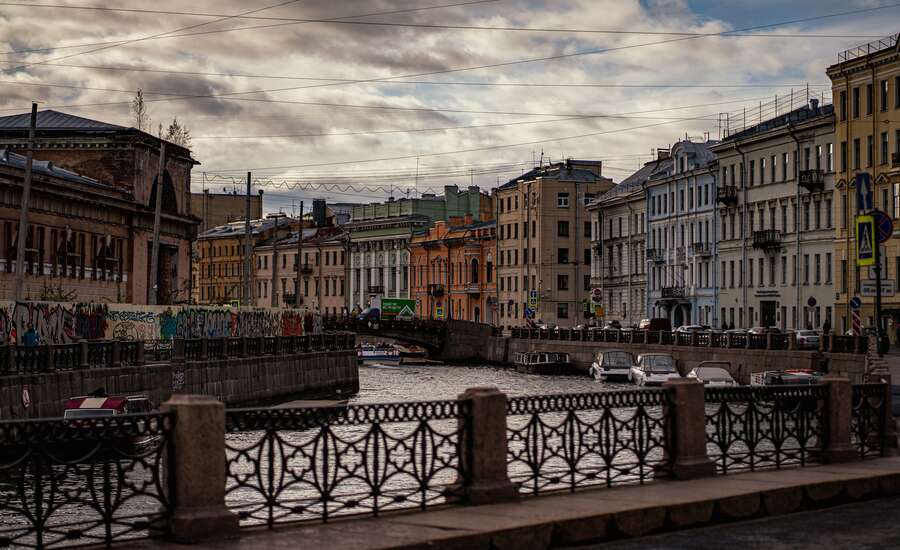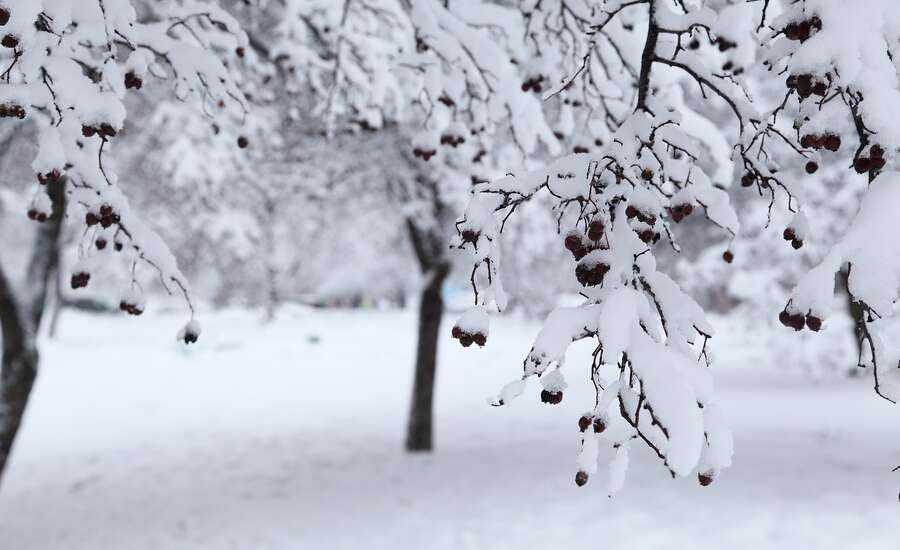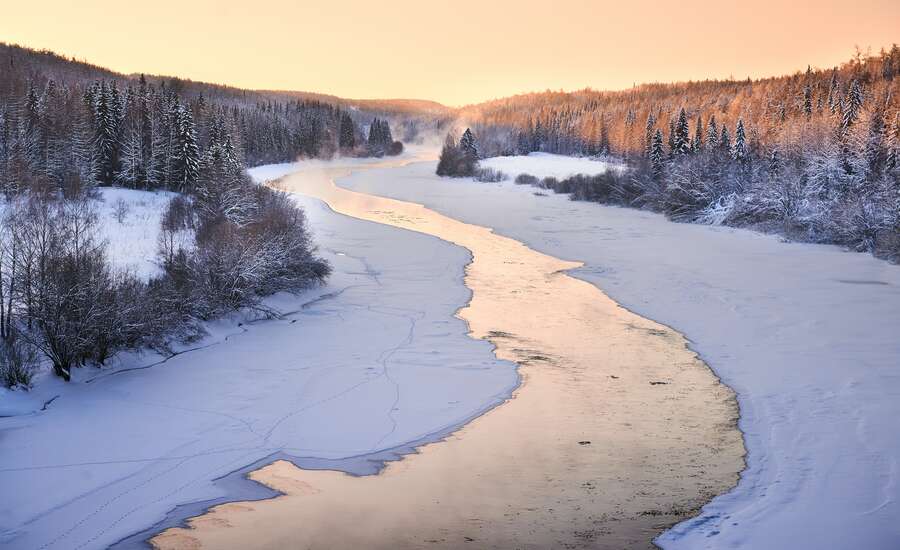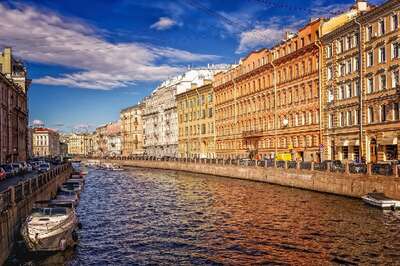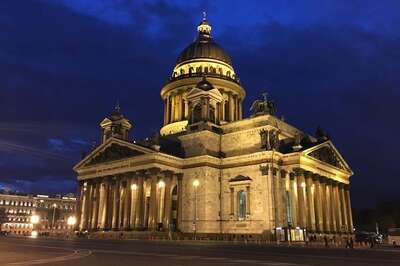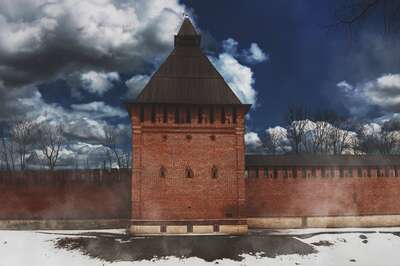North-Western District of Russia
Photo by Jonathan Planells from Pixabay
What are the special features of Russia’s North-Western District?
- The capital of the North-Western federal district is St. Petersburg.
- The Leningrad region and the Republic of Karelia are loaded with fantastic landscapes that include swamps, the lakes Onega and Ladoga and thick green forests.
- The Pskov region with ancient towns like Pechory, Izborsk and Velikiye Louki is famous for its monasteries, churches and traditional, Russian architecture.
- Ded Moroz and his charming little helper Snegurochka call Veliky Ustug their home, a place boasting beautiful white stone cathedrals and other architectural wonders that look like they are straight out of a fairytale.
- Situated in the freezing north-eastern part of the district, the Komi Republic with its capital Syktyvkar entices visitors with its rich cultural, historical and archeological heritage.
- Fans of reindeers should travel to Izhma, center of the Komi reindeer-breeders.
The North Western region is situated in the central part of the Eastern European plateau. The climate is definitely not the best in the world: winters are mild (rainy, snowy, slushy and humid), spring and fall are short; summers are short and only moderately warm. The average temperature in January is -12°C to - 16°C, in July +16°C to +20°C. Hot and dry days are very rare and if they do somehow arrive, they usually occur during the last two weeks of mid summer. The weather is unstable - warm, sunny days go together with nasty, rainy ones. Despite the weather it is a must see region during your Russian vacation.
St. Petersburg - capital of the district
Photo by Serj Sakharovskiy on Unsplash
Reaching this region is easy. St. Petersburg is the second major city of Russia and has its own international airport; quite a few international trains also arrive in the city. The North West region itself is definitely worth a trip: there are more than 4000 historical and cultural monuments, including some extremely interesting architectural masterpieces, not least among them the city of St. Petersburg itself. St. Petersburg is a historian's dream: here it is possible to imagine the lives of Russia's great writers, artists and musicians, who have enriched world culture. The North West region is also home to Staraya Ladoga - the capital of pre-Chrisptian Russia.
The region has many monasteries that are worth a visit; for example the Nikolsky Monastery (12th century) in Staraya Ladoga, the Troitsko-Alexandro-Svirsky in the Lodeynopolsk district, and the Great Uspensky Monastery (16-18th century) in Tikhvin. There are also some ancient fortresses in Ivangorod, Vyborg, Korela and Oreshek that make great day trips. Some of the most spectacular architecture and legacies of the Tsars can be found in the palace and park complexes of Pushkin, Pavlovsk, Peterhof, Gatchina and the Monrepo Park in Vyborg. To be honest it is very hard to decide where to go first - all of these places are quite beautiful and have their own character and aura. It is great if you have time to visit them all. Summer is the best time to visit Peterhof, which has an extensive fountain system that only works at that time. Pavlovsk and Pushkin are charming and peaceful during any season and so is the medieval city of Vyborg, which is to the North of St. Petersburg. Vyborg has a bit of character left over from its former inhabitants, the Vikings. When in Vyborg, you can go inside the ancient city fortress and climb to the top. From there, you will enjoy a fantastic view of the city and the Baltic Sea. The climb can make some people nervous but when you reach the top, your impressions will be unforgettable.
The center of the region is St. Petersburg, which is really impossible to describe in a few words. Please see our St. Petersburg Destination Guide. The city was found on May 27th, 1703 (old calendar), when a fortress named Sanktpietrbuch, in honor of Saint Peter. was constructed on Zayachy (Rabbit) island. This marked the beginning of this unique city. St. Petersburg is Russia's second largest and second most important city - the Northern capital of the country, and Russia's cultural center. It is considered the world's "Northern Venice" due to its extensive system of canals.
Leningrad region and Republic of Karelia
The Leningrad region possesses diverse natural resources. Lakes Ladoga and Onezhskoe are the largest in Europe and both are located in this region. The lakes cover an area of 1800 square km in total and the total length of the region's river system is 50,000 km. Nearly 80 species of fish can be found here. The region is interested in developing water tourism and currently much is being done in this area. Canoeists and amateur rafters can take part in the annual "Vuoksa" water-fest.
Karelia is also a region rich in nature and a great place for hiking and camping. Two or three weeks living in the open air in Karelia will recharge your system for the rest of the year! Visitors are attracted to the region by its unique landscapes - a combination of deciduous and coniferous forests, granite rocks and caves, underground medicinal waters and springs, sand dunes and sandy beaches.
Pskov region
Photo by Ольга Лазарева from Pixabay
The Pskov region is also a charming part of Russia, and has a rich history. The region borders Belarus, Estonia, and Latvia. The climate is mild and in the summer the sun shines for more than 19 hours a day - these are the famous white nights. The average temperature in January is -7C, in July, the temperature almost never falls below +17C.
The Pskov region is rich in 14th to 19th century architectural masterpieces. Ancient Pskov was first mentioned in the Russian chronicles of 903. This State-City was surrounded by a nearly unassailable fortress and guarded the North Western part of the Russian Empire. The Pskov Kremlin, which dates back to the 10th century, is among the most famous and interesting monuments in the region. It is located in the center of the city on a narrow, high hill, where the river Pskova flows into the river Velikaya.
Also worth a visit are The Trinity Cathedral, which is located inside the Kremlin and contains an interesting carved iconostasis, and the Mirozhsk monastery's Spaso-Preobrazhensky Cathedral, which according to the chronicles, was built before 1153. The cathedral is painted with unique frescos dating back to the mid 12th century. The monastery was a center of book and manuscript copying - almost like an olden day Kinkos. The Snetogorsk monastery complex is another must-see. Dating back to the 13th century, it is listed as a historic and architectural monument of national importance. The most significant building within the complex is the Blessed Virgin Birth Cathedral, adorned with 600 year old frescos. As one might expect, with all these cathedrals, great bells ring melodically throughout the city.
The Pskov State History and Architecture Museum as well as the Arts Reserve Museum - one of North West Russia's largest museums - opened in 1876, and cater for the cathedral-overloaded. The museum occupies the 17th century estate of S. I. Pogankin, the richest merchant of his time. The museum contains many interesting relics such as the Pskov prince Dovmont's sword, even more Pskov bells, collections of ancient coins and silverwork as well as archeological finds. There is a decent art gallery of Russian art in the building adjacent to the museum containing works by V. Borovikovsky, F. Rokotov, O. Kiprensky, K. Brullov, V. Tropinin, I. Aivazovsky, I. Repin and M. Shemyakin.
Photo by Аркадий Макаров from Pixabay
For those interested in Russian literature there is the Pushkin Reserve Museum, a unique historical, architectural, cultural and natural masterpiece situated in the Pushkin Gory (hills) and closely connected with the name of the great Russian poet. Pushkin wrote more than 100 works while living in this area. The Mikhailovskoye museum was founded in 1922, and consists of Pushkin's memorial estate in Mikhailovskoye, the Svyatogorsk monastery, the poet's burial place in the Pushkin Gory, the house of the Gannibals (Pushkin's predecessors) in Petrovskoye and the house of Osipovy-Vulf in Trigorskoe. The reserve museum is decorated with ponds, alleys and flower gardens which are ideal for summer walks and poetical contemplation.
Pechory is one of the most ancient towns of the Pskov region. The unusual Pskov-Pechory monastery is the central monument of interest in the city. Founded in 1473, it consists of an underground cave temple and necropolis in the Holy Mountain (the cave made by God). It is certainly worth a visit.
Another good destination is Izborsk, one of Russia's most ancient towns. It was mentioned for the first time in 862. The Izborsk fortress is a pearl of ancient Pskov architecture. The town also contains the Trouvorovo settlement, the old town's market place and the large burial mount on Slovetskoye field, dotted with stone crosses. Izborsk also has a famous mineral water spring.
Velikiye Luki is one of the oldest towns of the Pskov region and a large historical and cultural center. The picturesque bends of the river Lovat trace a famous river and trade route from the Varangians to the Greeks. In the center of the town there is a fortress built in the 10th century. The M. R. Mousorgsky Museum is also located in Velikiye Louki, on the shore of Zhizhitskoye Lake.
Veliky Ustug
Photo by Ottabatta from Pixabay
Prefer a more festive town? Visit Veliky Ustug, the residence of Grandfather Frost (Ded Moroz) - the Russian Santa Claus. Ded Moroz is both similar and different from the Western European Santa Claus. He is an old man who usually wears a red, long fur coat (though sometimes it is blue or even silver) and carries a staff. However this old guy has a young girl, named Snegurochka, traveling with him - she is usually considered to be his granddaughter. She is very pretty, has long blond hair and wears a nice blue fur coat. Ded Moroz isn't usually such a cheerful character; he can be quite cold, (but, we hasten to add, always fair). Snegurochka, on the other hand, is always very nice and open; she is constantly singing and dancing and helps Ded Moroz hand out presents. Over the past few years, Veliky Ustug has become a very popular destination for the Christmas and New Year season. The city was founded in the beginning of the 12th century. In the 17th century it received the title Veliky (great) as it played a great role in the development of Russian trade. During this time, it became a center for hard working elves and a few years later, Ded Moroz moved in. Not surprisingly, given its festive associations, Veliky Ustug was also a center of unique crafts.
Both the religious and civil architecture of the old town are extremely charming. Fairy-like white stone cathedrals, bell towers and estates look into the mirror-like surface of the beautiful river Sukhon. The well-preserved architectural masterpieces of the town have led to Veliky Ustug being named the "Northern Suzdal". Just two days spent in Veliky Ustug will be an unforgettable experience and will leave you with great memories of Ded Moroz, elves, and innumerable monuments. You'll get the chance to visit such places as the Ascension Day Church (1648), Mikhail-Arkhangelsk Monastery (1653), a working temple in memory of the local saint Prokopy Prabedny (1668), Trinity-Gledensk monastery (1659), with an iconostasis that is considered a world masterpiece of icon painting. Besides all of this, Veliky Ustug is a great place to shop for souvenirs. If you go there, don't forget to pick up woolen, felt boots known as valenky - they make your feet sweat but are really really warm and great for the Russian far north. And you can visit Ded Moroz at any time of the year - just hope he isn't in one of those unwelcoming moods.
Komi Republic and Izma
Photo by Vladimir Fedotov on Unsplash
The Komi Republic is situated on the Northeast of the European part of the Russian Federation. The center is called Syktyvkar, population is 227,000 people. For the most part, the climate is temperate continental, with long inclement winters, short and cool summers. The average temperature is January is -17 degrees Celsius, in July it's about +14 degrees Celsius. The distance between Moscow and Skytyvkar is 1,515 km and fast trains have made it possible to get from one city to the other is approximately 25 hours. The nearest international airports are in Moscow, Arkhangelsk and Nizhny Novogorod. Airlines, railroads and motor roads inside the country connect Komi Republic with all the Russian regions.
There are many different tourist routes and tours that the traveler may want to visit while in the Komi Republic. All routes start in the capital of the Republic, which as previously mentioned is Syktyvkar. You can have excursions all around the capital city, visit the National gallery of the Republic, the scientific and geological museum, which was built in honor of the memory of A.A. Chernov and other places of interest. You can also visit theaters of drama, which were built in memory of V. Savon, and take a brief tour of the philharmonic society and the folk theater.
Guests of the republic are deeply interested in the open air ethnographic museum in Ust Vym, an architectural complex of the Ulyanovsky and Kyltovsky cloisters, numerous archeological, cultural and historical monuments and cave settlements of the ancient Komi people. No one can remain indifferent to these picturesque places and unique monuments of nature located in the Polar and North Urals.
Those who like water sports would be interested in rafting along the Pechora River, and if you are more interested in history, there is an ancient capital of Komi tour. This includes city sightseeing and visits to theaters and museums.
A one day trip to the ancient village of Ust Vym - the former capital of Komi - is also recommended. In the year 2000 this village celebrated its 620th anniversary. There are churches, a monastery and a rich regional museum here, as well as the burial place of the 3 saints of the Russian Orthodox Church - Perm Bishops Gerasim, Pitirim and Iona. Also deserving a visit are:
- The Vazhkurya and Ulyanovo monasteries, the latter founded at the end of the 14th century. All the cloisters are in working condition
- The monastery in Ust VymThe convent in Kyltovo
- The Holy Springs located in the villages Pazhga and Yb, settlements of the Komi nation
- The ethno-pedagogical center, where traditional crafts of the Komi nation, in Pazhga
- The holy spring in Yb

